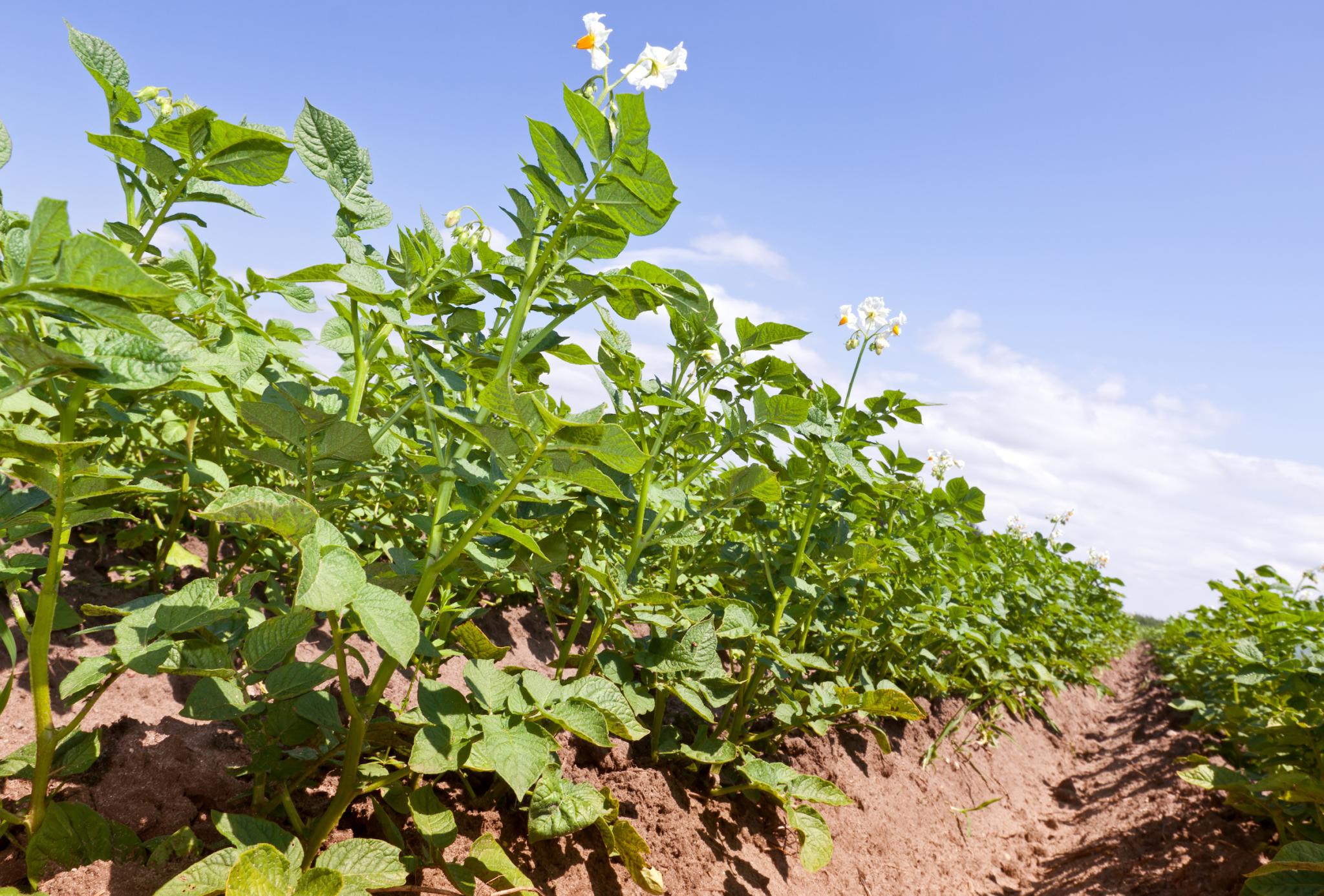Potato plants thrive best when planted in rows, in full sun locations that receive at least six hours of daily sunlight. When selecting your plot location, keep this in mind when planting potatoes in rows.
Start with certified disease-free seed potatoes purchased from home improvement, farm or garden centers. Or grow them in containers using commercial potting soil.
Preparation
Potatoes are an annual crop that should be planted in sunny, loose soil. Plant them during spring about one or two weeks prior to your area’s final frost date in order to eliminate potential pests while simultaneously taking advantage of warm spring weather to promote strong and healthy plants.
If planting potatoes directly in the ground, work the soil until it becomes loose and sandy. Avoid overtillage however as this can seal off parts of the soil that should allow seed pieces to germinate. Potatoes also thrive in containers like large pots, stacks of tires and old chimney pots.
Prior to planting potatoes, green sprouting can help promote early germination of tubers. You can also cut each seed piece into chunks with multiple “eyes”, where sprouts will develop, and store in a dark and dry location (e.g. greenhouse or windowsill). When sprouts reach one half inch in length it’s time for planting!
If planting potatoes in the ground, dig a trench about 3 to 4 inches deep. Space out your chitted potatoes 12-18 inches apart along rows three feet apart. When planting in containers instead, fill your container with rich compost or soil and gently plant your chitted potatoes with their shoots facing upwards into it. After your potatoes have been planted, cover them with straw or shredded newspaper to shield their roots from direct sunlight and slugs while watering regularly to keep the compost moist but not waterlogged.
Soil
Potatoes require rich, well-draining loamy soil that drains freely to avoid rot. Their plant can grow up to three feet tall and produce both aboveground stems as well as underground tubers; each stem also bears small leaf scars at its tip that are known as eyes.
If your potatoes are being planted directly into the ground, work up the soil to a depth of 6 inches before amending with organic material to promote proper drainage. For containers, ensure the container has drainage holes at its base so excess moisture can drain away quickly.
Smaller seed potatoes should be planted whole, while larger ones should be quartered using a sharp, clean knife to ensure each piece contains an eye from which new sprouts will come forth. If they have been stored for some time, place them in a bag at room temperature in order to promote germination.
If using the trench method, hilling (mounding up soil around each plant every few weeks to protect from sunlight which turns potatoes green and toxic), as well as providing more room for tubers to form. Once plants start flowering, hilling should stop altogether and some layers of straw added for moisture conservation purposes. A balanced soluble fertilizer should also be used throughout the season to foster healthy growth and maximize harvest potential.
Water
Ideal soil for growing potatoes is loose, deep loam that keeps moisture at optimal levels and drains well, but they’re tough enough to thrive even in poor soils with poor drainage and structure. A generous addition of organic matter often improves texture and nutrient content of poor soil.
Once sprouting has taken place, potato plants require constant attention in terms of watering. Too much heat or too much rainfall could quickly cause their tubers to rot; too little rain may also have the same result.
When your plant matures, it must be mulched to protect its roots and leaves from exposure to light, keep the ground cool, reduce weed and pest issues and keep pests away. Loose straw or compost work best as mulch material while gardeners may also opt for wood chips or soil as options. Ideally, potato plants should be covered as soon as they begin growing to prevent turning green and developing diseases or fungus.
Grocery store potatoes may be suitable for starting seed pieces, but should never be planted directly into your garden as they may contain harmful fungi and bacteria that spread rapidly through the soil and cause future crops to suffer from damage. Instead, it’s wise to purchase certified disease-free seed potatoes from home improvement centers, farm and garden centers, or online retailers to lower your risk of transmitting disease to your vegetables.
Sun
Potatoes are heat sensitive plants, so for optimal growth they require plenty of direct sun light – at least six hours each day is ideal – along with well-drained soil that contains plenty of organic matter; sandy soil can encourage root rot. In cooler climates, potatoes should be grown in containers or barrels filled with compost for best results.
Choose disease-free seed potatoes when planting potatoes. Or try “green sprouting,” whereby whole tubers are exposed to light for three months in an unheated dry spot before being planted out as sprouts that will mature within three months and give you a crop without the need for a garden.
When growing potatoes, layering a mulch layer around each plant can conserve moisture, prevent weeds from growing and keep soil cool while helping prevent diseases or fungus. Potatoes require regular fertilization with low-nitrogen organic fertilizer such as Miracle-Gro(r) Performance Organics Edibles Plant Nutrition Granules for strong root development and tuber formation.
Once potato plants begin flowering, hilling should begin. With a rake, raise the soil level until it reaches approximately two inches above their top leaves – being mindful not to bury stems which would produce new tubers underground.

